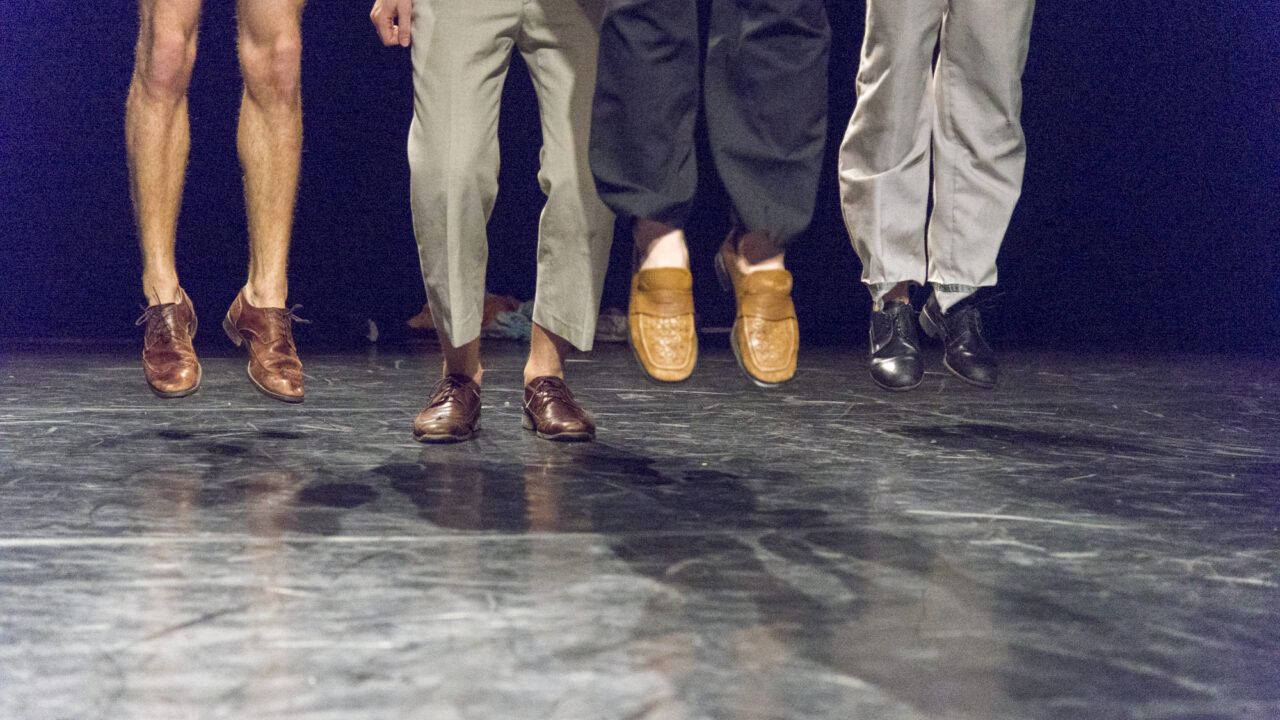
Performance “Pung”.
Author and director: Renate Keerd, presented by Kompanii Nii troupe.
Production: Kompanii NII.
Co-production: STÜ and Tartu Uus Teater.
Premier: 14 of November 2012, Tallinn.
On November 6 I visited Kompanii Nii’s production “Pung” at Tartu New Theatre. It was a special occasion for me, mainly because I had never seen or heard anything like it.
“Pung” is 45 minutes long and no one utters a single word – there are a lot of facial expressions, noises and images communicated physically – lying down, sitting, standing up and even floating in the air (or on each other’s backs). As the New Theatre homepage says it: Kompanii Nii is a physical theatre troupe.
Numerous clothing items are used in the show, worn all at once or tossed all together on the floor, creating a big heap. You might think taking off five layers of clothes might be time-consuming, but it seemed to last for a fragment of a second. And these weren’t just socks and hats, but coats, sweaters and a calypso! The props, however, didn’t play such a big part in the show – there were a few of them, if we don’t take into account the actors’ bodies, which seemed to be transforming into physical objects. The whole production was like a dream you were able to see being fully awake, or a morning exercise routine at the army – already towards the middle I had an urge to rest and drink water just by looking at the dancers.
“Pung” contains a plenitude of symbols, but their interpretation depends on every viewer’s personal inner world. For me, like I said, it was like a dream – real and surreal at the same time, but mostly quite confusing as a performance, because I don’t feel as familiar with physical theatre as with classical theatre.
The beginning of the show itself was so peculiar that I needed some time to settle in. I thought perhaps it is because beginnings tend to be like this, but it didn’t get more familiar throughout the show watching the frenzy on the stage becoming more and more animated. To be honest, the the show seemed surprisingly comic – take a scene, for example, where one of the male performers carried out a short, but seemingly simple exercise routine, but every time he started from the beginning, somebody jumped on his back and he had to do it all over again; from the next round a second person clung to his back and so forth. In the end there were four of them, but luckily that’s when they stopped – I was beginning to get worried about their health.
I have to say I was nervous about the safety and health of the performers throughout the performance because the acrobatics was incredibly intense. Men and women flown into the air and I feeling scared because I felt any second now one of them will come tumbling down. But they landed safely into each other’s arms.
There were more tricks in “Pung” than at a circus show, but it is hard to put it into words – much like the most bizarre dreams we have. To get a better understanding of what I am trying to say you should really see the show yourself. Being a regular theatregoer I am familiar with the heavy feeling when it seems like you’ve seen everything, but your soul yearns for more. To fend off this feeling, “Pung” is a refreshing and perfect choice, offering a wide scope of feelings that will haunt you for a long time afterwards.
